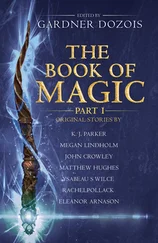SIZZLED IN HOT OIL AT THE BEGINNING OF COOKING TO RELEASE SUBTLE AROMAS
Bay leaves (TEJ PATTA) – Woody leaves of the laurel plant.
Black peppercorns (KALI MIRCH) – Pungent whole peppercorns.
Cloves (LAVANG) – Strong and minty flower buds.
Green cardamoms (ELAICHI) – Fragrant seedpods.
Cinnamon (DALCHINI) sticks – Sharp and sweet bark of a tree.
Cumin (JEERA) – Warm and earthy seeds.
Red chillies (LAL MIRCH) – Long fiery red chillies.
ADDED LATER TO INJECT THE DISH WITH INTENSE FLAVOURS
Coriander (DHANIYA) – Warm and lemony powdered seeds.
Cumin (JEERA) – Earthy powdered seeds.
Turmeric (HALDI) – Bitter and luminous-yellow powdered root.
Chilli (LAL MIRCH) – Powdered fiery chillies.
Garam masala – A blend of the whole spices (see above), roasted and powdered.
The initial stash was going to keep me going for some time, according to Masala Man. So next I stocked up on the fresh ingredients, used in between adding the whole and powdered spices. These perishable ingredients would clearly need to be purchased more frequently, at my local supermarket for convenience.
Root ginger / Garlic / Green finger chillies
Bunch of coriander leaves / Bag of curry leaves
Onions / Greek yoghurt
MISS MASALA HAD ARRIVED. And Keema Mattar was my first recipe of choice. Highly satisfying with some pitta bread, this also appealed because it needed no more skill than a deft hand to jab mince with a wooden spoon. The long list of ingredients had all been duly acquired.
Gripped with feverish excitement, I set the oil to heat and quickly chucked in the whole spices. Next, I threw in the onions, ginger and garlic and stirred gently, waiting for them to brown. They didn’t for ages. So I lost patience and added everything else. The result was a crunchy onion and mince concoction that was as far away from India as I was from opening my own restaurant.
I had followed every instruction (almost) to the letter. So I couldn’t have been very far from the real thing. Down but not out, I tried the recipe again the following week. And this time, it came out just the way I remembered from our weekday dinners at home.
It seemed that the most basic ingredient for Indian cooking was patience. Creating the perfect kebab was never going to be as straightforward as opening a bag of ready-prepared salad. Or as quick. In fact, the word ‘quick’, when applied to Indian cooking, is truly relative. Considering some recipes take up to a day of soaking, chopping and stirring, half an hour to make a mixed vegetable curry is essentially fast food.
The secret of cooking the food just right lies in timing. Indian cookbooks are full of vague instructions like ‘when the onions are cooked’ or ‘when the masalas are ready’. Knowing when the moment is right is essential, because ingredients are added in stages. A group of spices is added only when the previous lot has changed hue, aroma or texture. But I had to work out for myself when the dish was ready for the next addition, because no one ever explains it.
I learnt with the keema that I should have waited until the oil was hot before starting to cook. Next, added any whole spices like cloves, cinnamon and bay leaves. As they started sizzling, I should have tossed in the chopped onions and fried them until golden brown. It was my job to watch the lot. Which sounds exhausting, but actually is easy to get the hang of. After a few goes, I was on autopilot.
Minced meat with peas and fresh coriander
My favourite Pakistani restaurant has the dubious strap line ‘probably the best tandoori restaurant in London’. I once asked the waiter about the ingredients in their Keema Mattar. Beef mince, he replied, helpfully.
Beef isn’t eaten by Hindus in India. Only the really bad ones like me. After years of blood, sweat and tears (I do like a bit of drama), I finally came up with a recipe that uses more than just mince and less than a page of ingredients. It’s as simple to make as spaghetti Bolognese and chilli con carne but a happy respite from both. You could just as easily use lamb mince for this moist but curry-free dish.
Feeds 4
1 large onion
2.5cm (1in) root ginger
2 garlic cloves
1 tbsp oil
whole spices
2 bay leaves
8 cloves
8 cardamoms
5cm (2in) cinnamon stick
10 whole black peppercorns
1 tsp coriander powder
1 tsp cumin powder
1/ 2tsp turmeric powder
1/ 2tsp chilli powder
4 tbsp tomato purée
2 fresh green finger chillies
4 tbsp natural Greek yoghurt
500g (1lb 2oz) lean minced beef or lamb
1 mug of frozen peas
1/ 2tsp garam masala
25g (1oz) fresh coriander, roughly chopped
salt
1. Peel and finely chop the onion, ginger and garlic. Pour the oil into a medium pan set over a high heat. When the oil is hot, add the whole spices. Within seconds they will start spluttering, and you’ll be able to smell their heady aromas.
2. Now add the onion and fry for 5 minutes until it starts to go a pale gold. Stir in the ginger and garlic, and fry for a further 5 minutes until the masala mixture caramelises, turning a golden brown.
3. Next add all the powdered spices bar the garam masala. Fry them for about 5 minutes, stirring constantly with a wooden spoon. If the spices get stuck to the bottom of the pan, add a tablespoon of hot water to release them while stirring and scraping the base of the pan with the spoon.
4. Then stir in the tomato purée and fry for a further minute. Lower the heat and simmer for 5–10 minutes until you can see the oil beginning to rise to the surface of the mixture. Meanwhile, roughly chop the green finger chillies.
5. Turn the heat up high once again, and add the yoghurt, chillies and mince. Stir like a maniac so that the meat browns evenly and there are no large lumps in it. Then add half a mug of hot water and leave to simmer, uncovered, for 15 minutes.
6. Finally, add the peas and simmer for about 5 minutes until they’re cooked. Add salt to taste, and stir in the garam masala and chopped coriander to finish.
7. Keema is divine served with toasted pitta bread or hot rotis, along with some mango pickle and a dollop of creamy, natural Greek yoghurt.
WITH ALL INDIAN RECIPES THERE ARE SOME OBVIOUS SIGNS FOR WHEN TO MOVE ON TO THE NEXT STAGE OF COOKING:
 The oil is sufficiently hot if it forms little bubbles when you touch it with your wooden spoon.
The oil is sufficiently hot if it forms little bubbles when you touch it with your wooden spoon.
 Whole spices are ready when they sizzle and release pungent aromas.
Whole spices are ready when they sizzle and release pungent aromas.
Dried spices, whole and powdered, each have their own strong smell, which will tone down when cooked.
 Onions are cooked when they are evenly golden brown but not burnt.
Onions are cooked when they are evenly golden brown but not burnt.
Tomatoes are cooked when they disintegrate.
A combination of dried spices and other ingredients is ready when, having been cooked on a slow simmer, oil starts oozing out of little holes in the mixture.
Lentils are done when they lose their shape and become integrated with the cooking water to form a thick soup.
AN IMPORTANT TRICK, I LEARNT, is to whack the heat up high and stir like a maniac to prevent the spices from getting stuck to the bottom of the pan and burning. As I explained to my uninitiated sister: don’t make love to it, fuck it! If the spices do get stuck on the bottom of the pan, just add a couple of tablespoons of hot water from the kettle and scrape them off.
Читать дальше

 The oil is sufficiently hot if it forms little bubbles when you touch it with your wooden spoon.
The oil is sufficiently hot if it forms little bubbles when you touch it with your wooden spoon.










